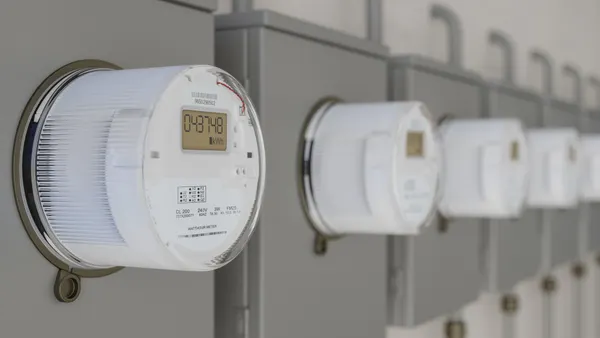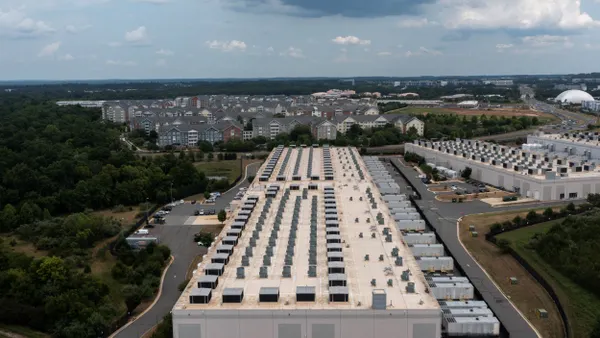By all conventional measures, 2016 is a good time to be a wind developer.
Wind provided a record 4.7% of U.S. electricity last year and accounted for 41% of all generation capacity additions — well outpacing solar and natural gas, which each accounted for about 28%.
That growth is expected to continue after the five-year extension of vital federal tax credits at the end of 2015. But as they phase out in the coming years, the extensions now appear to lead to unforeseen trouble.
“The PTC has helped wind get to its current position, but a day of reckoning is coming,” Chris Brown, the incoming chair of the board at the American Wind Energy Association, said Tuesday at the trade group’s annual conference in New Orleans.
The wind industry is approaching a “valley of death” in the early 2020s, Brown said, as the tax credits phase down and utilities meet their initial emissions standards under the EPA’s Clean Power Plan.
Even if the federal carbon regulations survive their court challenges, renewables growth is expected to drop in the early part of the next decade before plateauing out to 2030. But wind leaders who spoke at the conference said they are already devising strategies to allow strong growth to continue across the so-called valley.
Into the ‘valley of death’
Brown, the president of developer Vestas Americas, explained that current U.S. energy policies create a gap in support for renewables.
Under the extension package, the tax credits for wind phase down for five years before sunsetting in 2020. But the compliance period for the Clean Power Plan is not slated to start until 2022, and is likely to be delayed for a year or more due to a judicial stay applied by the Supreme Court as the carbon rules are litigated.
As utilities purchase more renewables to take advantage of tax credits, many are expected to fulfill their initial emissions requirements under the plan before that time. After building an annual average of 8 GW or more of new capacity from 2016 to 2020, the market for renewables is likely to suddenly shrink significantly, Brown said. There may be demand for only about 2 GW of new capacity in 2021.
“We call it the valley of death, and to cross it we will need to get to a [levelized cost of energy] that beats solar and natural gas without incentives,” Brown said.
A report from the Rhodium group earlier this year provided more detail on the dilemma.
After the tax credit extension, the analysis firm forecasted the incentives would mean that utilities would pull back on their natural gas plant investments and use renewable energy to meet their state targets under Clean Power Plan, which aims to cut carbon emissions from the power sector 32% by 2030.
The renewables expansion from 2016 to 2021 will likely “enable the power sector to meet CPP compliance,” said Rhodium Director John Larsen said. Even with conservative natural gas and renewables cost assumptions, “renewables run the table for CPP compliance.”
The economic appeal of the PTC will drive developers, especially in the next two years, Larsen said. The current $0.023/kWh tax credit will phase down to 80% of it present value in 2017, 60% in 2018, and 40% in 2019. Following a recent IRS guidance, incentives will be available to developers who invest 5% of a project’s cost before the end of a given year.
The tax credit program “makes wind so competitive there is no point waiting to see what the price of natural gas and the price on carbon will be in the early 2020s,” Larsen said.
Before the new IRS guidance, Rhodium estimated annual renewable capacity additions would drop by more than 50% from 2021 to 2022. After that “additions flat line at about 4 GW to 5 GW,” Larsen said.
At that point in the early 2020s, Rhodium and others had expected CPP compliance to take over as a main incentive for renewables growth. But given potential legal delays and aggressive renewables growth before that time, the need for add more may already have been met, Larsen and the AWEA members now realize.
“The CPP requires only so much emissions reduction," Larsen said. "When utilities and power producers get that, the remainder comes from ramping down coal. No new renewables will be needed through 2030.”
Demand for renewables will drop unless they become so cheap that incentives and policy drivers no long matter, Larsen said. If the Clean Power Plan is struck down, there would be more downward pressure on the renewables numbers, especially further down the road, he said.
"The 2020-2021 build forecast is a direct result of the carbon price [from the Clean Power Plan] kicking in by 2021 and 2022,” he said, “so if there is no carbon price at all in the future because there is no CPP, some of the build would happen earlier and a good chunk of the late year build in our forecast would not materialize."
Wind’s five-point plan
Despite that rosy growth outlook for the next five years, Brown said the wind industry is already realizing new efforts will soon be necessary to fuel growth.
He and AWEA President outlined a five-part plan to sustain growth after 2020. It begins with bringing down the levelized cost of energy (LCOE).
While natural gas should only be thought of as a “transition fuel,” Brown noted that solar technology is improving rapidly. Wind can only sustain its leading position as an emerging resource if its technology remains a low cost, high reliability option. To do that, wind must reach a higher capacity factor, and reduce capital and operating costs, he said.
During a press conference Tuesday, Brown was asked how much the wind industry might cut an unsubsidized LCOE that is today as low as $0.04/kWh in some wind-rich regions.
“We cut it two-thirds in the last six years and we can do that again,” he answered.
Beyond reducing costs, a next step will be is increasing state demand through renewable portfolio standards and other pro-renewable policies.
AWEA has already started that push, joining in recent collaborative efforts in Maryland, Vermont, Oregon, and California that resulted in significantly higher state renewables mandates.
Some at the conference also advocated for revisiting the Clean Power Plan’s 32% emissions goal by 2030. The Clean Air Act requires that all regulations based on its authority, such as the CPP, be reviewed every eight years, but as AWEA Research Director Michael Goggin noted, “there is nothing preventing EPA from reviewing it sooner.”
A third step, Brown and Kiernan said, will be overcoming barriers to siting and building new transmission projects. Though AWEA remains officially neutral, it approved of recent efforts to secure unprecedented federal assistance for a line that will deliver Oklahoma wind to the Southeast.
Its leaders talk so much about merchant inter-regional transmission development across the country that former Louisiana Sen. Mary Landrieu (D), currently senior policy advisor at energy industry law firm Van Ness Feldman, suggested that AWEA should change its name “the American Wind Energy and Transmission Association” during a panel discussion in the afternoon.
A fourth step, AWEA leaders said, involves vigorous internal industry efforts to bring down the costs of operations and maintenance, a push that will certainly involve utilities who own wind projects.
Finally, the industry must rededicate itself to protecting its brand, Brown and Kiernan said. It continues to fight against unsubstantiated or exaggerated claims about the cost of grid integration, supposed harms to natural habitat, and wind aesthetics.
The industry must find a way “to keep politics out of the way of business and consumers,” Brown said.
Beyond the valley
The question facing the wind industry today, Brown said, is whether it can develop the “problem-solving mindset” to push through the tough times to come.
If the industry can sustain growth through the policy gap in the early 2020s, the industry could help establish a new type of energy system, one based on renewables.
“Coal is dying, with or without the CPP, and natural gas is a heavily subsidized transitional fuel, not a solution,” Brown said. “Wind can cross that valley of death to get to the right side of history where energy is cleaner, cheaper, and abundant.”
On that “right side” of history, Brown said, there will be a broad renewable energy coalition driven by the free market, with wind, solar and storage working together. It will be based on “regional market coordination and just-in-time transmission,” Brown said.
By then, the annual new build of renewables could be a stable 8 GW to 10 GW, and willing utilities could produce 100% of their power from renewables, he said.
“Sustainability is the next chapter in human progress and the key is making renewable technology economic,” Brown told the conference. “The benefits for Generation Wind would be in moving from scarcity to abundance, changing from destructive to creative, and shifting from resource constrained to technology enabled.”













